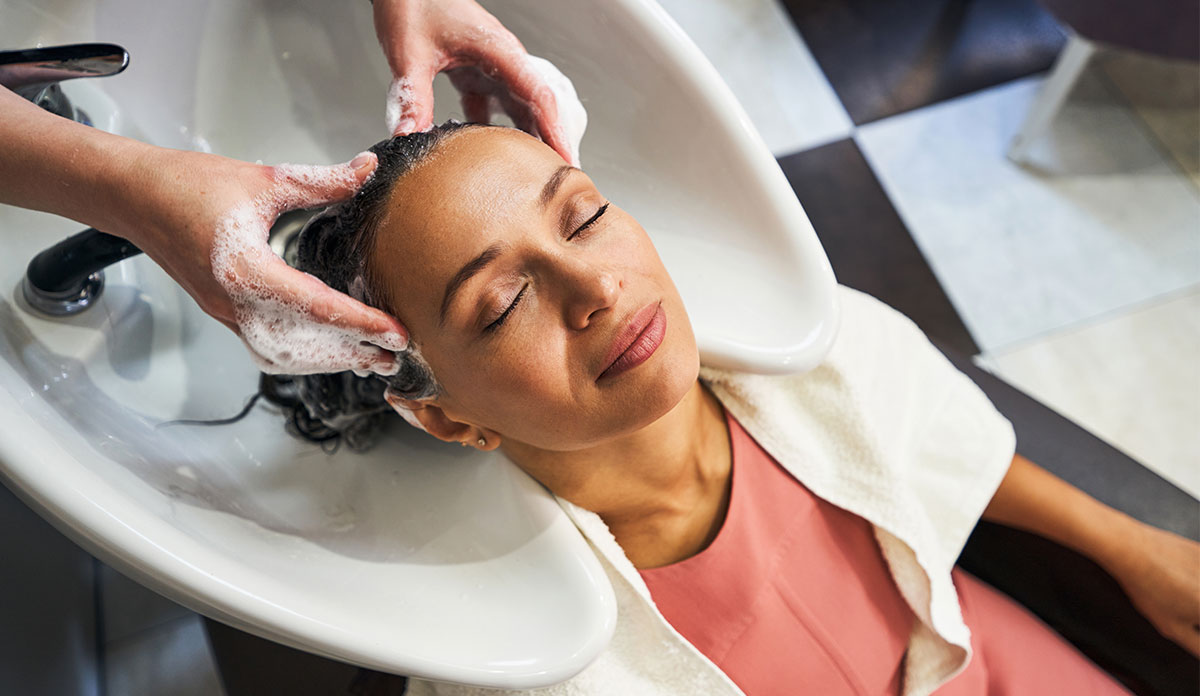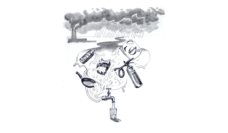Do you know what vinyl floors, children’s toys, food packaging, nail polish, menstrual products, wet wipes, body lotions, baby powder, and hair products have in common? They all contain phthalates. But, what are phthalates and why should we care about them?
Phthalates are a class of chemicals that are considered endocrine disruptors, meaning that they mimic or interfere with the body’s hormones. Elevated exposure to phthalates can lead to adverse effects on fertility and pregnancy, including preterm birth and gestational diabetes. Phthalates are also linked to respiratory problems including development of allergies and asthma.
Although almost every American is exposed to these chemicals, hairdressers are particularly vulnerable. Even in this subgroup, Hispanic and Black hairdressers who serve an ethnically diverse clientele are at particularly high risk due to the contents of popular hair treatments they give to their clients and may also use themselves. These include hair oil, root stimulator, and lye-free perms and relaxers.
Of the 800,000 hairdressers and cosmetologists in the US, 92.3% are women and 31% are Black or Hispanic women. Boyle et al. (2022) analyzed levels of phthalates found in the urine of hairdressers and compared them to the levels of phthalates found in the urine of office workers. They sampled hairdressers from 11 salons that primarily served African-American clients and 12 salons that primarily served Hispanic clients, and they recruited 17 office workers, all from the DC/Maryland Area. This study was the first to examine phthalate levels among hairdressers of color and its findings show that hairdressers of color could be facing disproportionate phthalate exposure. This work extends previous research which has reported that that the levels of phthalates among hairdressers were 2.3 to 40.5 times higher than among women in the general public.
A study by Helm et al. (2016) examined the concentration of endocrine disrupting chemicals in personal care products used by Black women. They found that 72% of the products they tested contained phthalates. That research team detected phthalates in all the roots stimulators, hair relaxers, and hair lotions they studied. They also found that phthalates, as well as other endocrine disrupting chemicals, were often not listed as product ingredients.
Doing natural hairstyles (twists, sister locks/locks, and afros) was associated with lower levels of phthalate exposure. But researchers also reported that concentrations of phthalates were high among hairdressers that reported doing permanent weaves/texturizing, chemical straightening, bleaching, permanent hair coloring, Brazilian blowouts, and keratin treatments. One phthalate, used to add fragrance to personal care products, was 10 times higher among hairdressers than office workers.
What is the safe level of phthalates and are any regulations to limit our exposure? Unfortunately, we do not have a short answer. Some phthalates have been permanently banned from being used in children’s toys. Others have been banned on an interim basis as researchers continue to investigate possible health effects. And some have been regulated to not exceed a concentration of 0.1%.
Avoiding phthalates exposure falls on the consumer. You can limit your exposure by buying products that are phthalate-free and that are fragrance-free. Some global movements have started to advocate for a safer use of endocrine disrupting chemicals in our cosmetics and personal care products. But as you learn about ways to minimize your personal phthalate exposure, keep your environmental justice googles on, and maybe start a conversation with your hairdresser on the subject.
Photo via Getty Images














